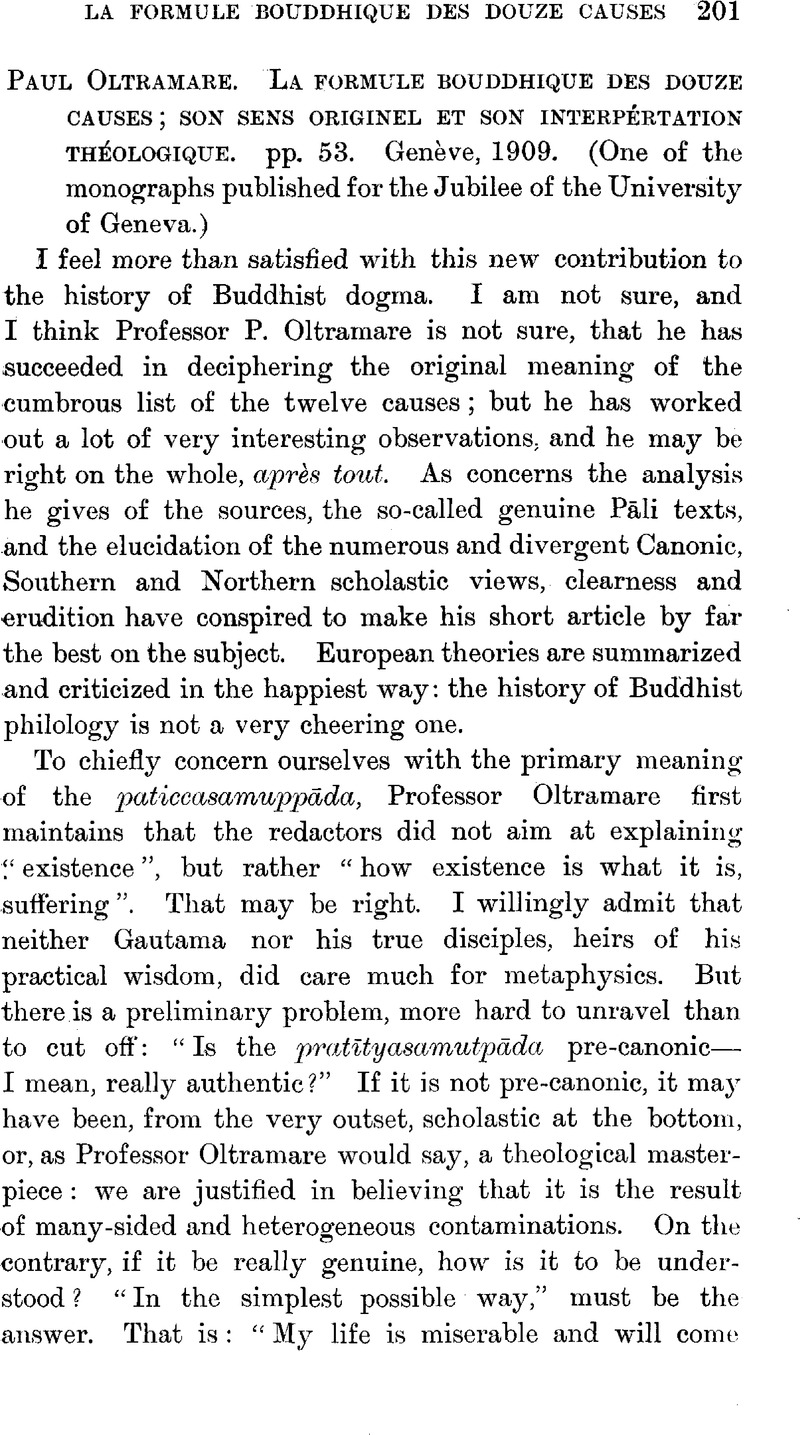No CrossRef data available.
Article contents
Paul Oltramare. La formule bouddhique des douze causes; son sens Originel et son Interpértation théologique. pp. 53. Genève, 1909. (One of the monographs published for the Jubilee of the University of Geneva.)
Review products
Published online by Cambridge University Press: 15 March 2011
Abstract

- Type
- Notices of Books
- Information
- Copyright
- Copyright © The Royal Asiatic Society 1910
References
page 204 note 1 . . . na bhikṣavaḥ karmāṇi . . . bāhye pṛthivīdhātau vipacyante, . . . api tūpātteṣu skandhadhātvāyataneṣu.
page 205 note 1 I am not sure that this definition would hold in every case.
page 206 note 1 I venture to differ from Professor Oltramare on some points of little importance, p. 10: As well said, kāma is sexual desire; there is “desire” in the rūpadhātu, as far as I know. p. 27, note: I think that the Śālistambasūtra has the canonic phraseology, p. 28: But there is a jīvitendriya, at least in the latter scholastic, p. 41: I do not see how avidyā acquired a new value (and a cosmic one) from the fact that it came to be looked upon as the ignorance of the nairātmya. p. 41, note: Lefmann follows Rājendralāl, but the Tibetan translation has pratyayebhiç ca ( = co), and confirms Professor Oltramare's scepticism. p. 46: Is not Buddhaghoṣa to be understood according to Śikṣāsamuccaya, p. 227, 11?—As concerns Pāli references, it seems that the true light came recently from Cambridge (Mass.): to give up the notation by sūtras, vaggas, samyuttas, sub-vaggas, etc., would be helpful to the reader and very agreeable to our excellent friend Professor Lanman.


